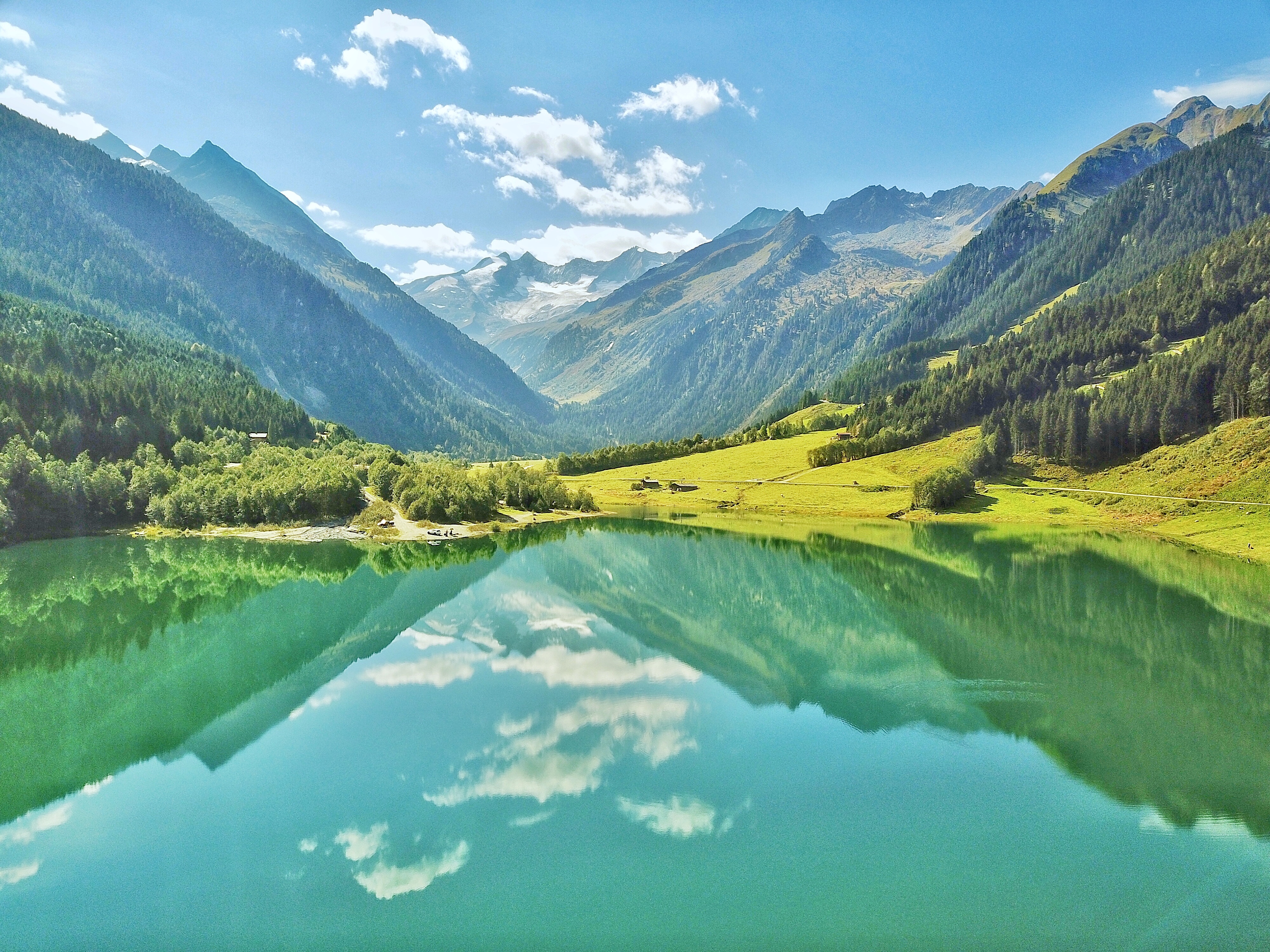Hey everyone! I just came back from a long road trip in UK, and now it’s time to post again. Woohoo~ so exciting! I noticed that the #travelphotocontest recently introduced daily themes. Great news for travel and photography enthusiasts, isn’t it?
##
When I see today’s theme “Ancient Architecture”, the first image popped up to my mind is the famous Maya structure - the Temple of Kukulkan. So, I will start from my photo of the temple, and invite you to explore the Maya ruins with me.
##

##
If Kukulkan doesn’t sound so familiar to you, then would Chichén Itzá ring a bell? This archaeological site is classified as one of the New Seven Wonders of the World, and it was enlisted as an UNESCO World Heritage Site in 1988. Before I visited the place, I didn’t know it’s a whole site with groups of architectures from different periods in history. I thought that most recognizable step pyramid is called Chichén Itzá.
##
这周刚从英国回来,终于又有空发文啦。看到旅行摄影活动的今日主题是“古代建筑”,脑海中立刻出现世界新七大奇迹之一 —— 墨西哥的奇琴伊察遗址。其实出现的是羽蛇神金字塔,以前我一直以为这个金字塔就是奇琴伊察,去了这个玛雅遗址后,才知道原来整个奇琴伊察遗址占地10平方公里,包括各个历史时期的建筑群。而其中最有名的羽蛇神金字塔处于中心位置,位属北边一个建筑群。从下面我的照片和地图里可以看到,它的东边有一个武士神庙。再远一点还有其他建筑群,以后再继续分享。
##

##
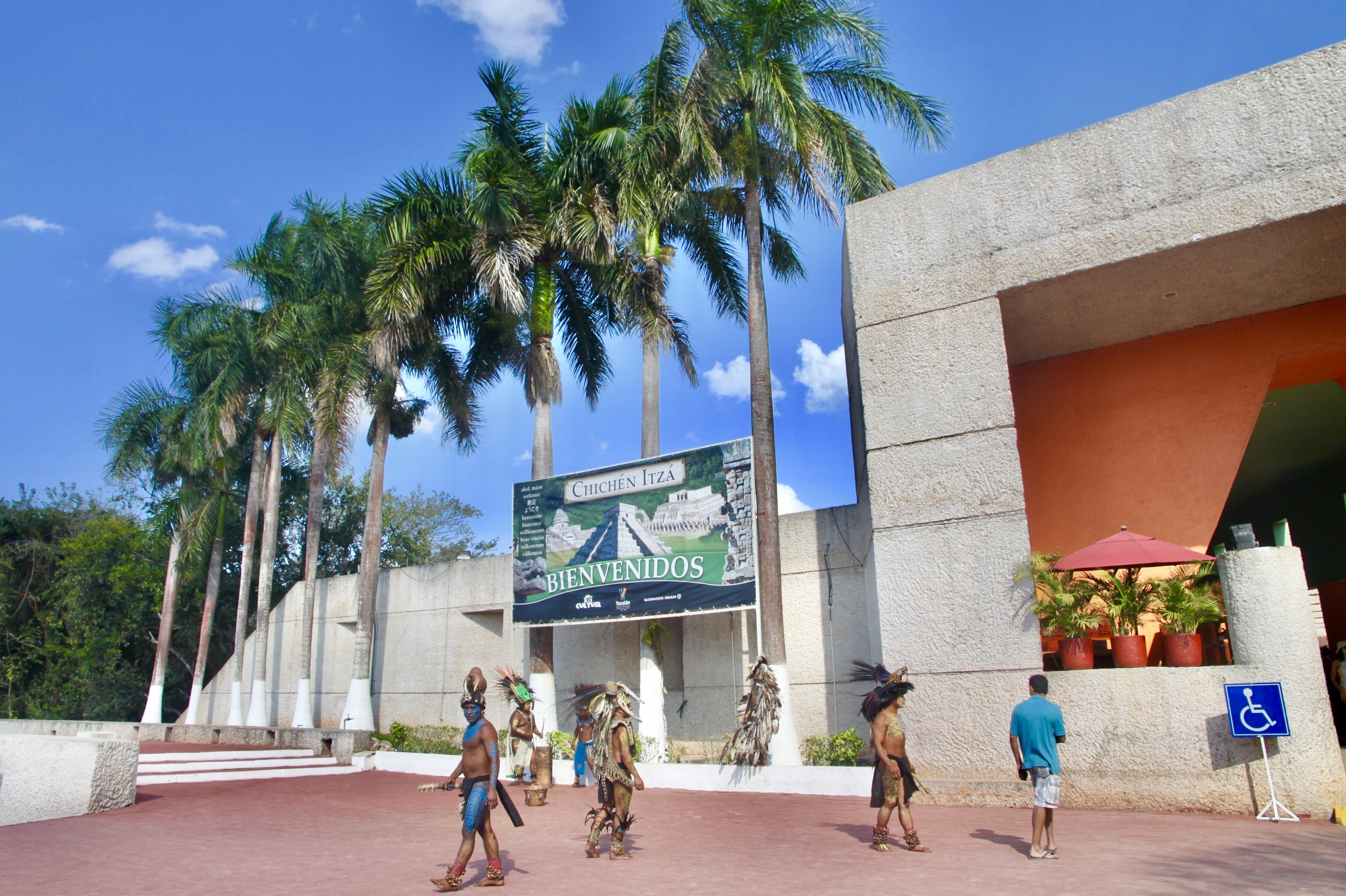 .jpg)
.jpg)
##
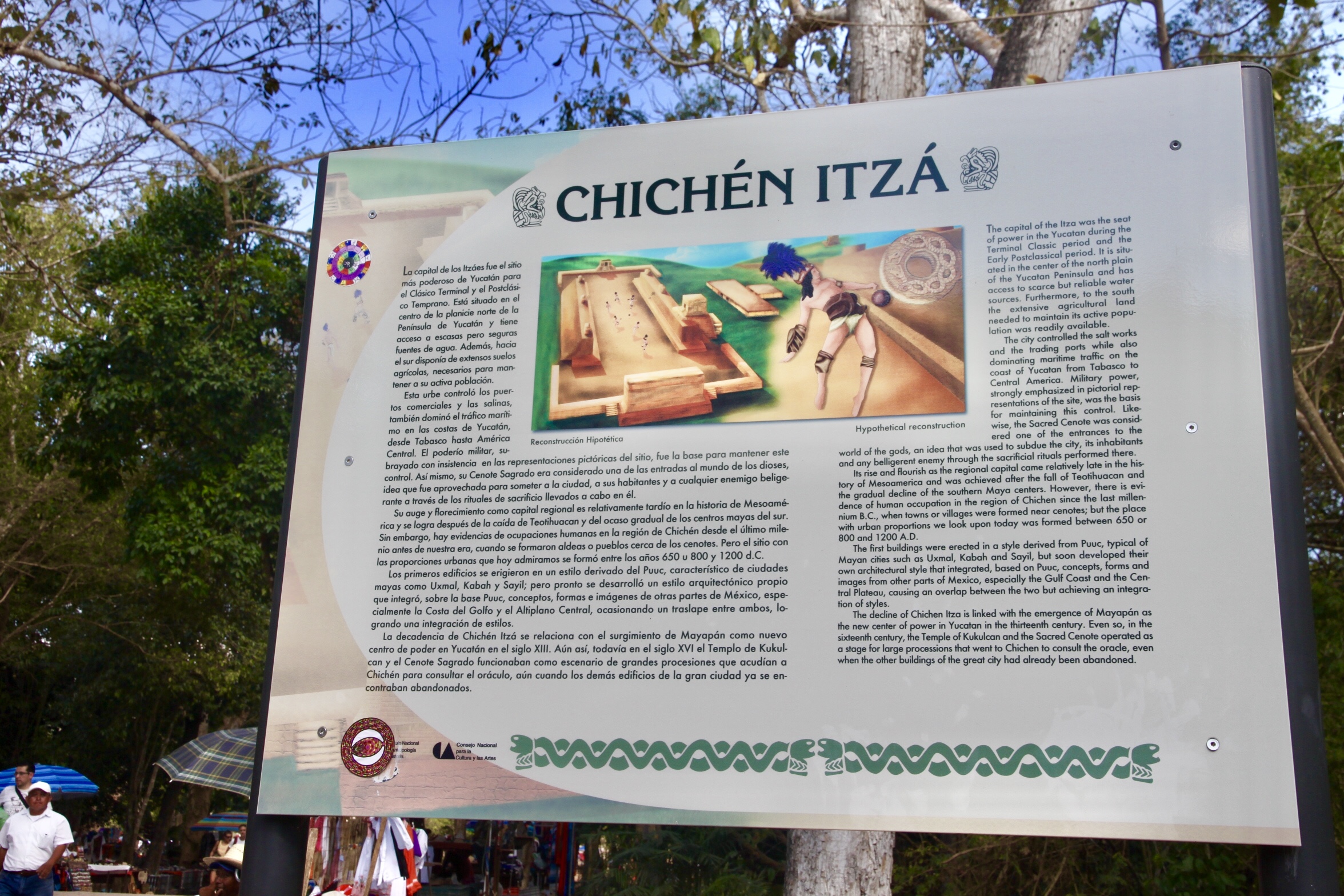 .jpg)
.jpg)
##
In fact, the Mesoamerican pyramid, as you can see in my photos here, is called El Castillo (meaning “the castle” named by first Spaniards), also known as the Temple of Kukulkan/Kukulcán. It is located at the centre of the Chichén Itzá archaeological site in the Yucatán state of Mexico. It’s part of one of the three best known complexes - the Great North Platform. Other momuments in this set include the Great Ball Court and the Temple of Warriors. The entire Chichén Itzá site of Maya ruins occupies an area of 10 square kilometres.
##
On the left corner of my photo below, you see the Temple of the Warriors, another stepped pyramid. Its name came from the surrounding carved columns depicting warriors:

##

##
Chichén was founded presumably by Maya peoples at around the 6th century. The Maya name “Chichén Itzá” means at the mouth of the well of the Itzá, an ethnic group that used to dominate the northern Yucatán Peninsula. Speaking of wells, you have to check out those cenotes (sinkholes) there. Jumping into the refreshing water holes is such a treat in the extreme heat and humidity of the jungle!
##
这片古城区最初建于公元6世纪左右,玛雅语“奇琴伊察”是指位于伊察人的水井口,伊察人曾在历史上居住在尤卡坦半岛北部,现在的墨西哥领土。人类文明的起源通常跟水息息相关,尤卡坦半岛虽然没什么河流,但奇琴伊察当地有三个天然溶井,终年提供的充足水源,自然使这里成为了人口中心。其中两个溶井至今存在,附近也有其他大小溶井,当地人就叫它们“水洞”,很形象,很清凉,尤其在热带丛林的极度湿热中,跳进这些水洞真是太爽了。
##
 .jpg)
.jpg)
##
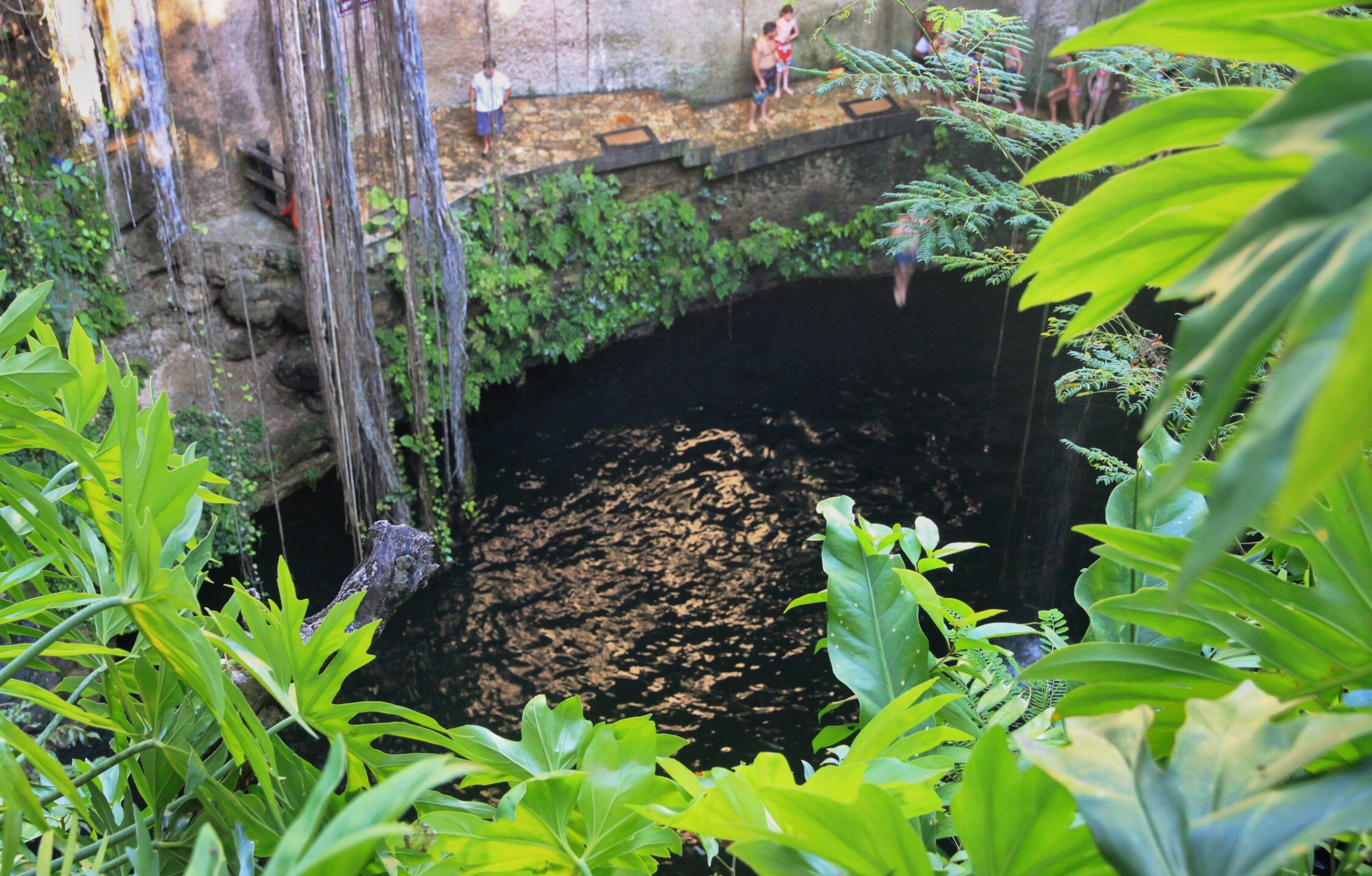 .jpg)
.jpg)
##
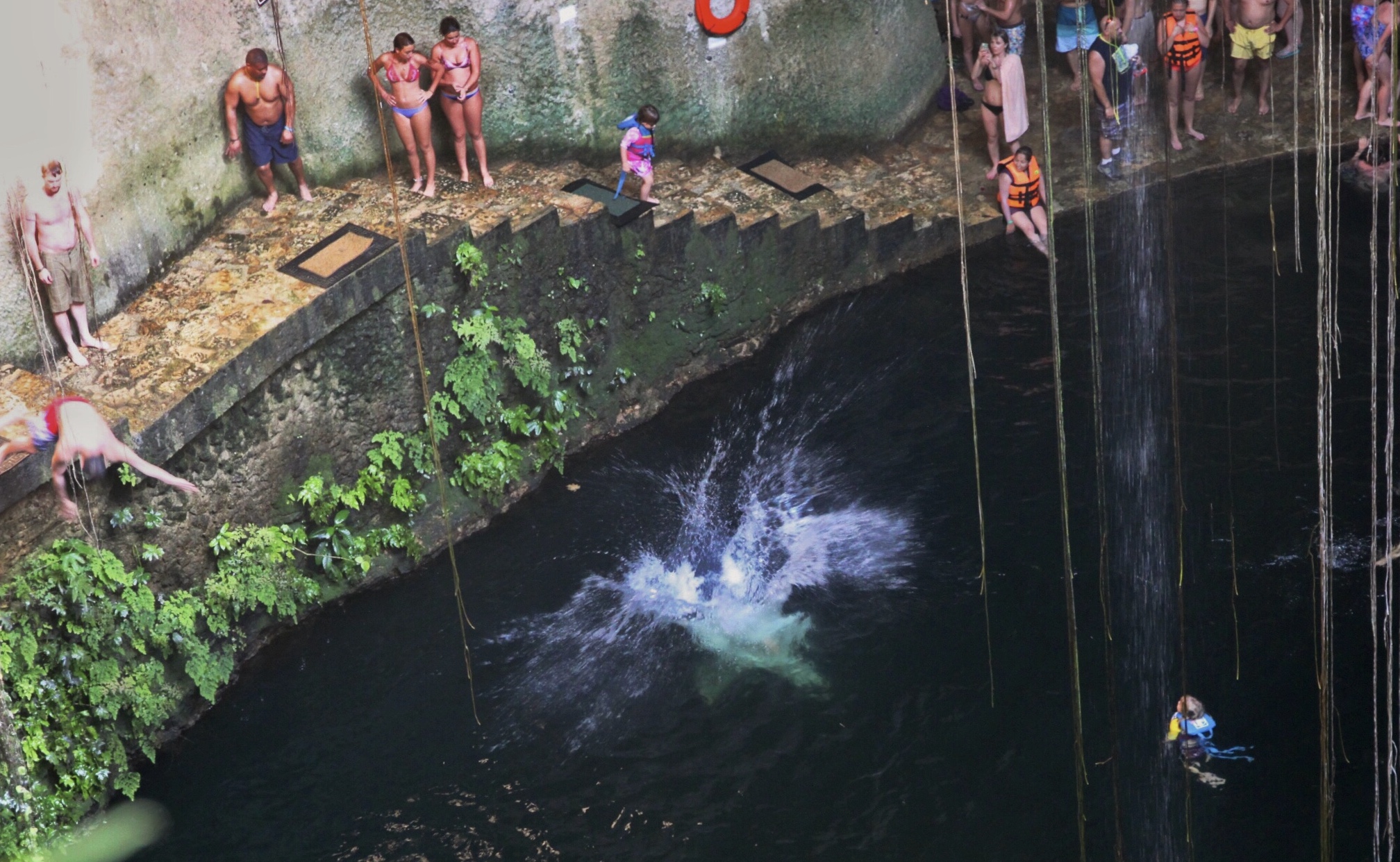 .jpg)
.jpg)
##
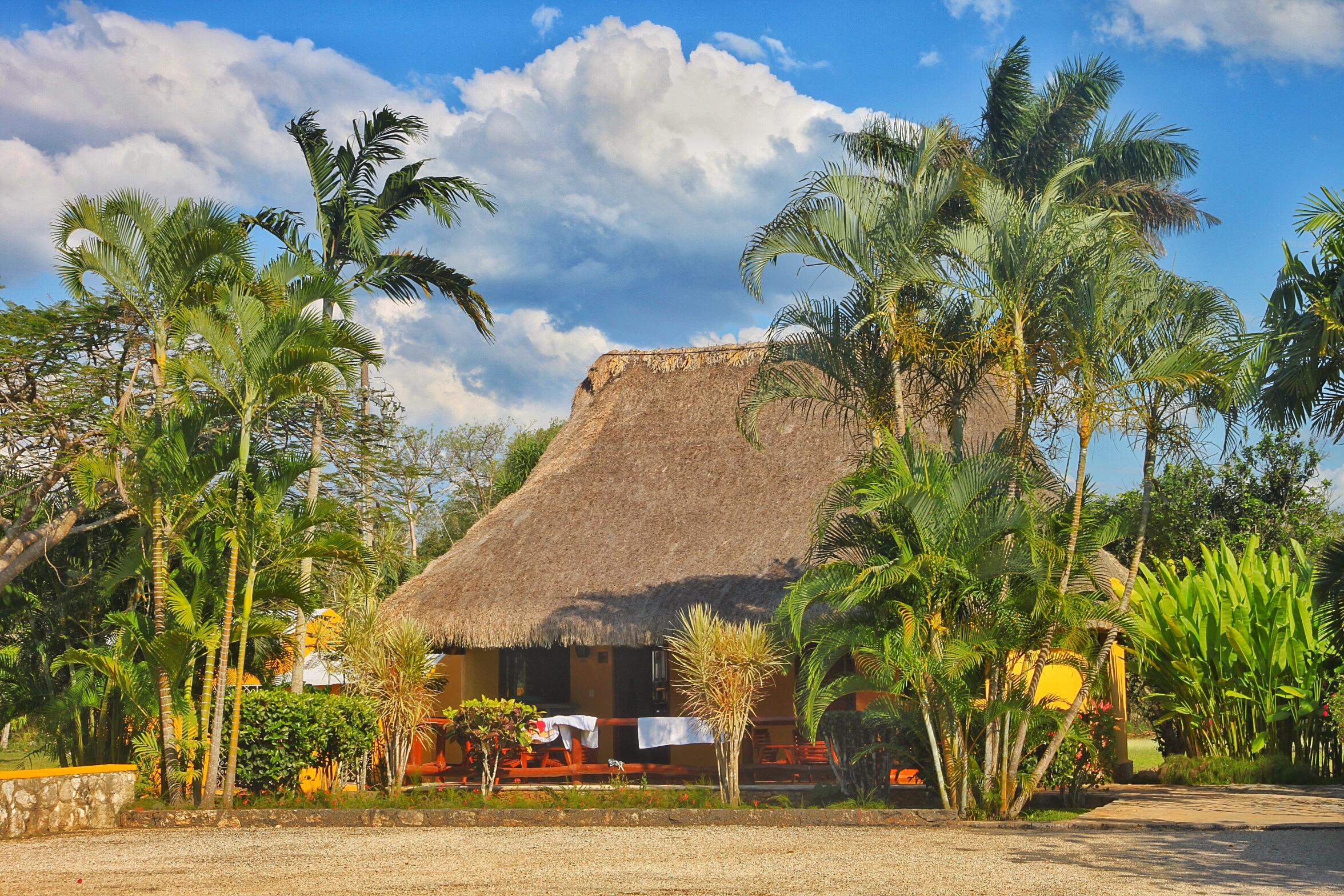 .jpg)
.jpg)
##
“Kukulkan” is a Maya feathered serpent god worshipped by the Yucatec Maya peoples of the Yucatán Peninsula before the Spanish conquest. I saw carved limestone heads of a serpent at the base of a staircase, but I couldn’t get close to them as the pyramid was fenced. And according to a local guide, a red jaguar throne studded with jade was found inside the pyramid in excavations.
Anyway, looking at the 30-metre high 9-platform pyramid from distance is pretty amazing already. Upon the summit, you see a 6-metre high temple standing there. The four sides face four cardinal directions, and on each side, there are 91 steps leading to the top, making 364 in total. Hmm, so why not 365 - the number of days in a year? It actually is! You only need to add in the one step taken to enter the temple. These smart ancient people.
##

##
Now it comes to the more magical and probably the best known part: at sunrise or sunset, around the Spring and Autumn equinoxes, the triangular shadows casted on the north side of the pyramid are believed by some scholars to be the representation of Kukulkan wriggling down the staircase. They suggest that the structure was used for religious rites to ensure good agricultural results. And I visited it on the 25th of March, right after the Spring equinox! The pain of unplanned travels…
##
Still, this kind of fascinating and mysterious ancient architecture nevered failed to leave me in awe.
##

古代玛雅人信奉羽蛇神,为其建了这座金字塔,历史上又在旧塔基上加盖了更大更酷的新塔。这塔高达30米,地基方形,九层平台,四面分别朝向东南西北。每一面的台阶各有91级,乘以4,总数364级,你要问为什么还差1级就达到一年的天数了?别急,古代人聪明着呢,好像4个面也建不出总数是奇数的台阶来 加上最后登顶入殿的那1级,就正好是365级啦。
而最出名的可能要算每年春秋分时的奇观了。日出日落时,金字塔的拐角在北面的阶梯上投下羽蛇状的阴影,并随着太阳的位置滑行下降。一些专家认为这一景观被玛雅人用在宗教仪式中,以祈求农业丰收。是不是很神奇?又想到其他一些古文明中让人惊叹的设计,总觉得我的智商完全跟不上几千年前的古人。说到春秋分,我去的那天是3月25号,正好刚过春分,所以也无缘见到那滑行下降的羽蛇神。我倒是在塔基的一角看到羽蛇神头的石雕,但是因为十多年前有游客登顶发生意外,金字塔不再对外开放,被围封起来,也没法靠近细看。据说在一次考古挖掘中,发现塔里还有个红漆镶玉的美洲虎王冠,感兴趣的朋友可以自行搜索看看这一羽蛇神王的权位象征。
to be continued…
未完待续……
All content by @itchyfeetdonica
图文 by Donica多
Thank you for visiting! Please tell me what you think. Exchange makes change! =)
If you like my content, please support me by commenting / following / upvoting / resteeming.
感谢来访!你的关注/点赞/留言/转发就是对我最好的支持~ 下次见!:)

Here are some of my travel shots. Check out my posts on Steemit World Map, and follow me for more adventures around the globe! :)
下面是我的一些旅途摄影。欢迎查看我的Steemit世界地图,跟我一起环游世界~!

View this post on TravelFeed for the best experience.
!steemitworldmap 20.682891 lat -88.568507 long d3scr
This page is synchronized from the post: ‘#330 Chichén Itzá (1) | 羽蛇神金字塔’
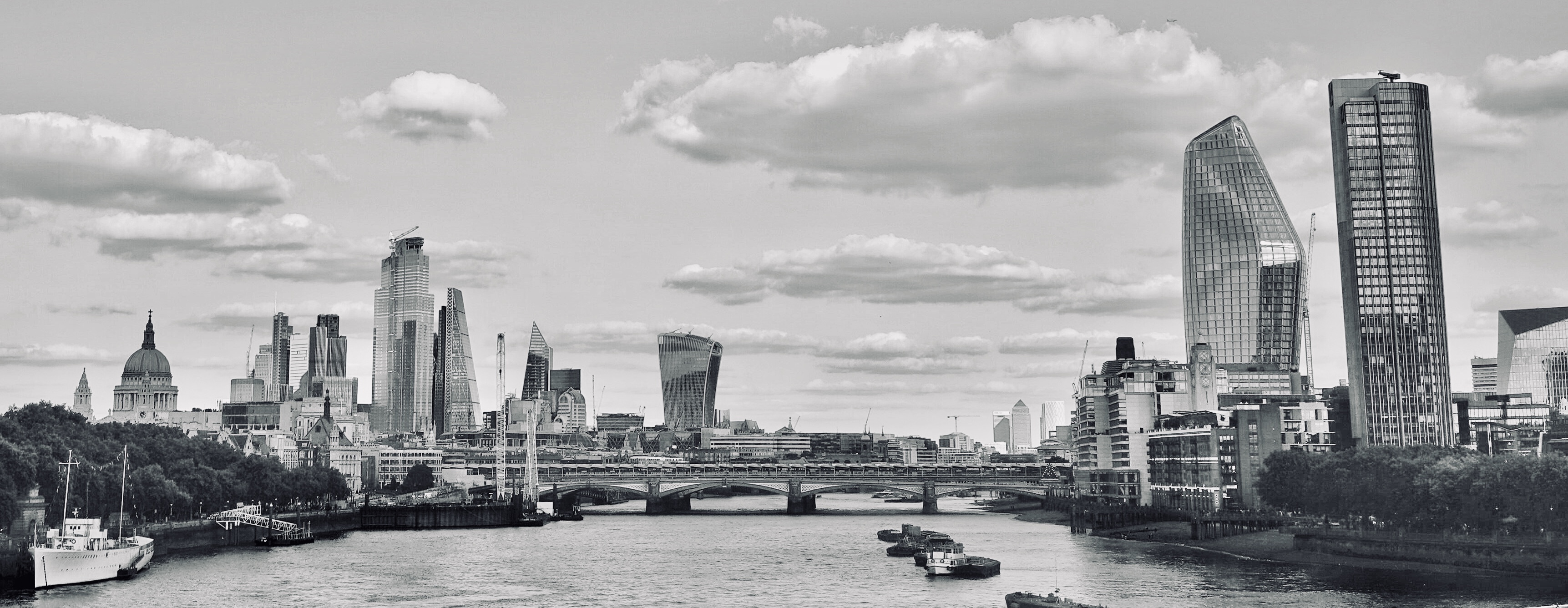










 .jpg)
.jpg) .jpg)
.jpg)

 .jpg)
.jpg) .jpg)
.jpg) .jpg)
.jpg) .jpg)
.jpg)






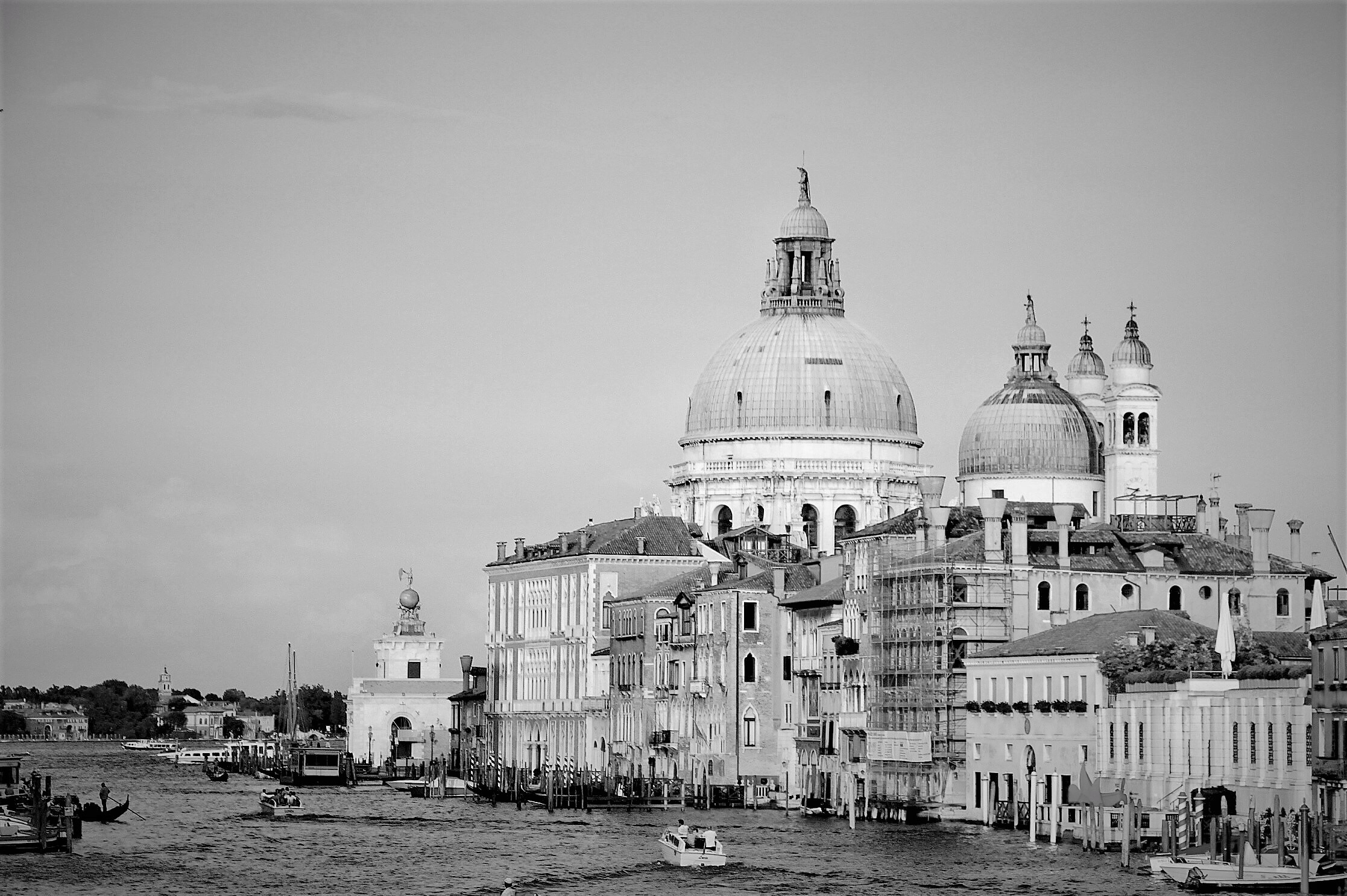


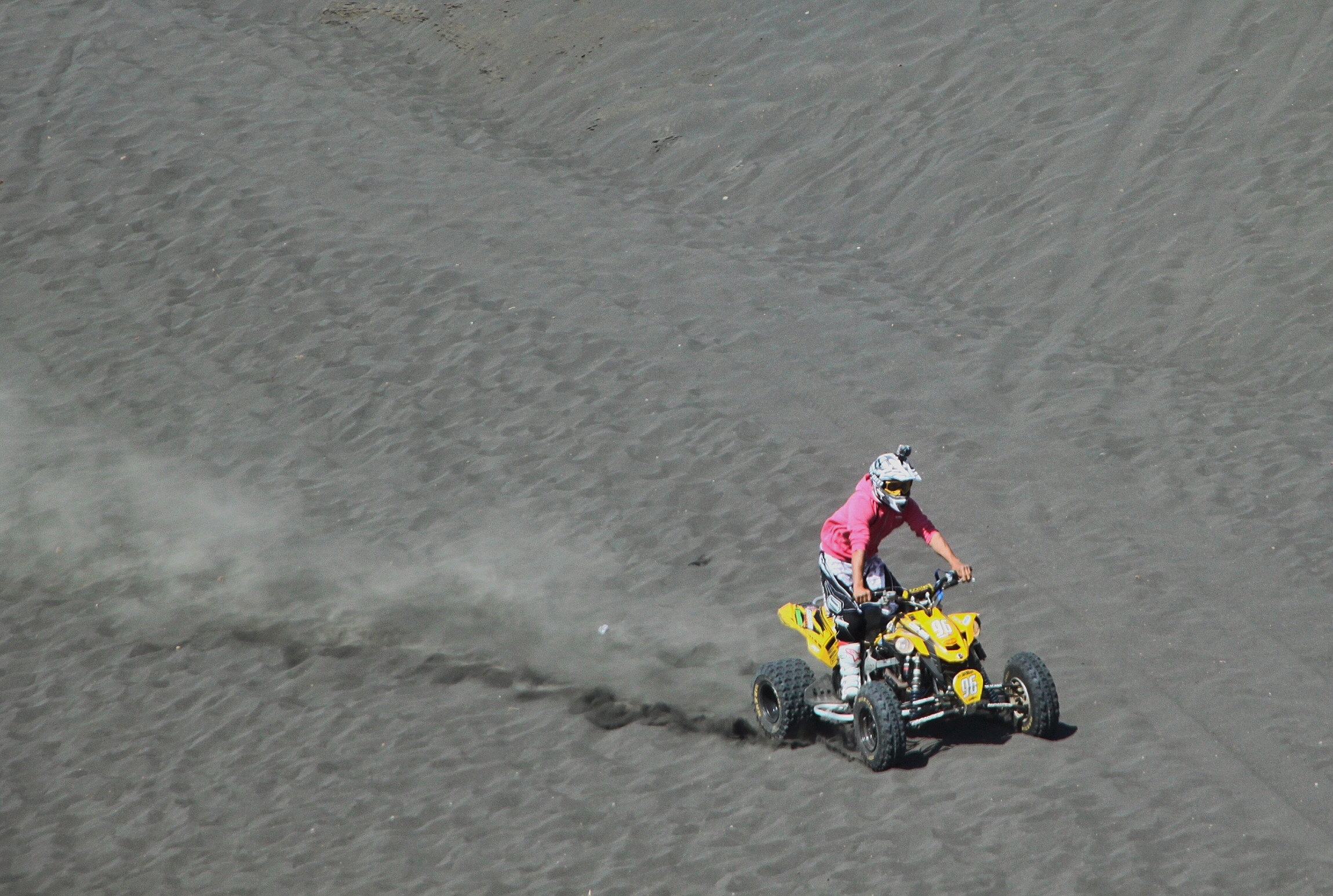.jpg)
 .jpg)
.jpg)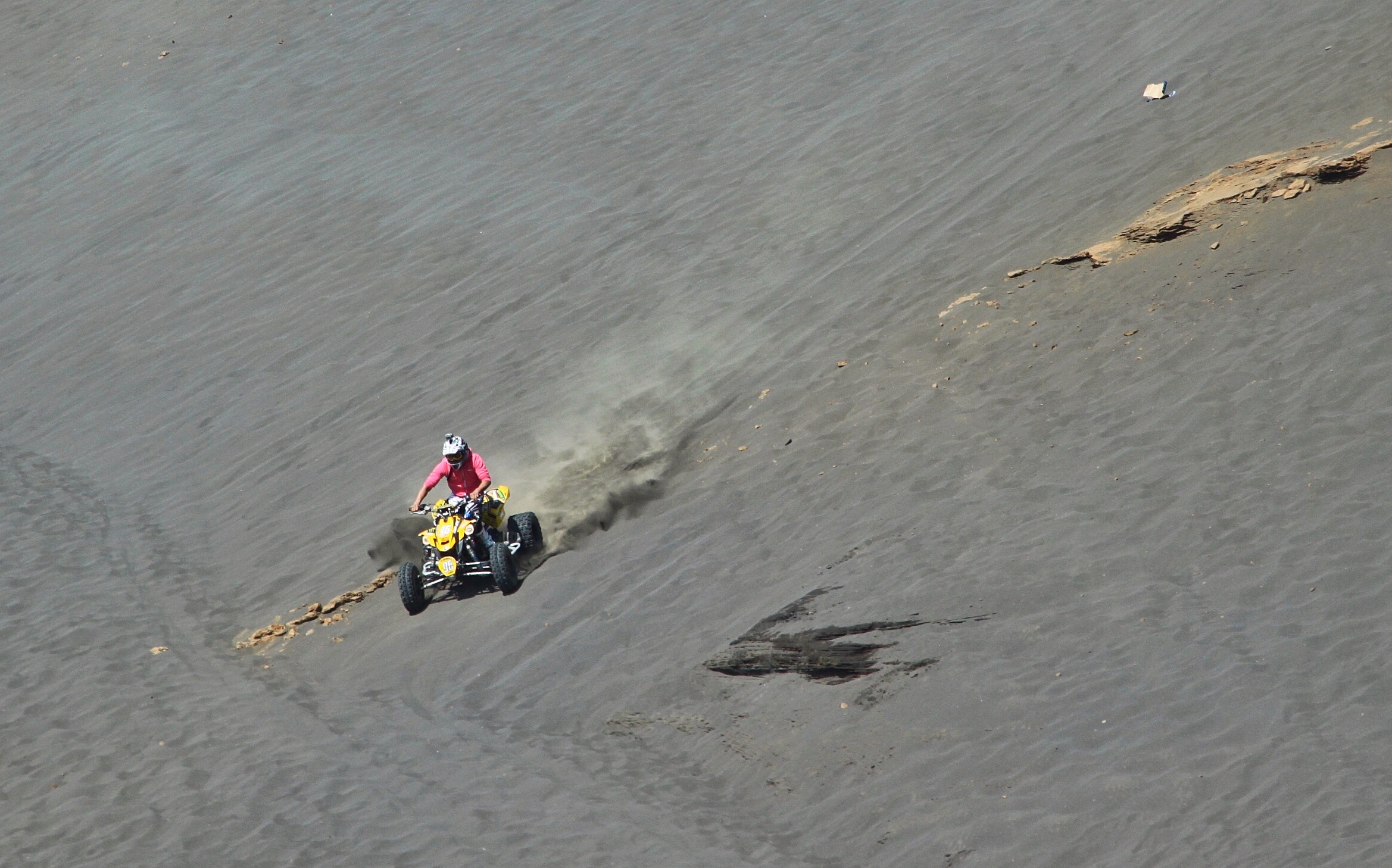 .jpg)
.jpg)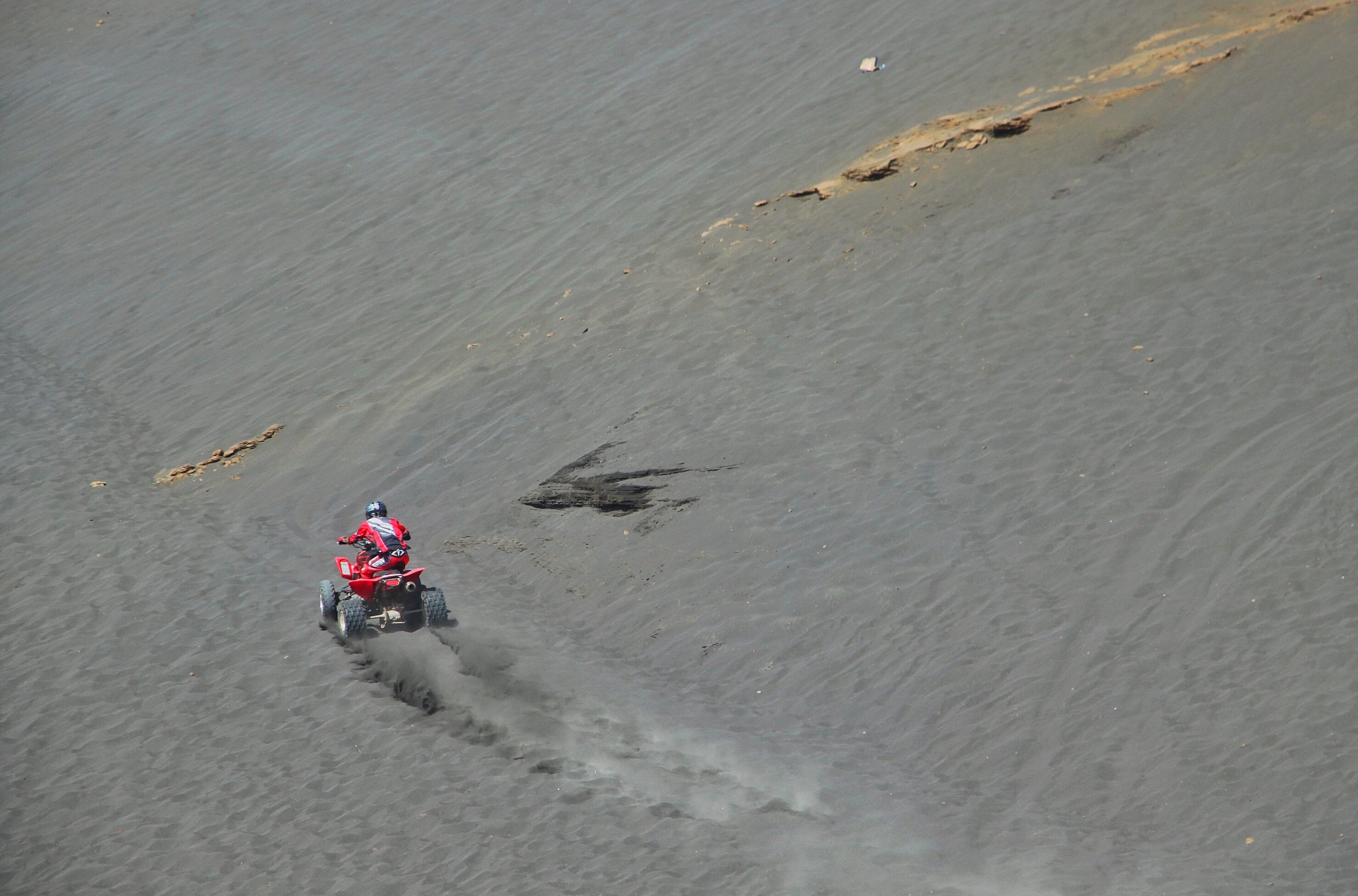 .jpg)
.jpg)